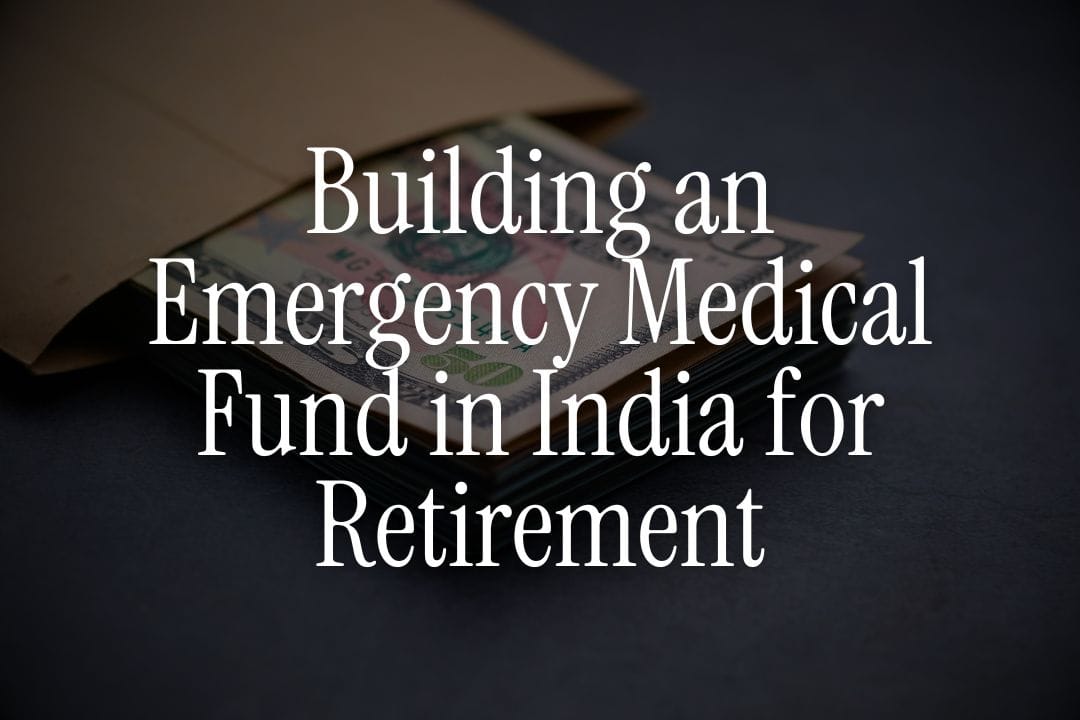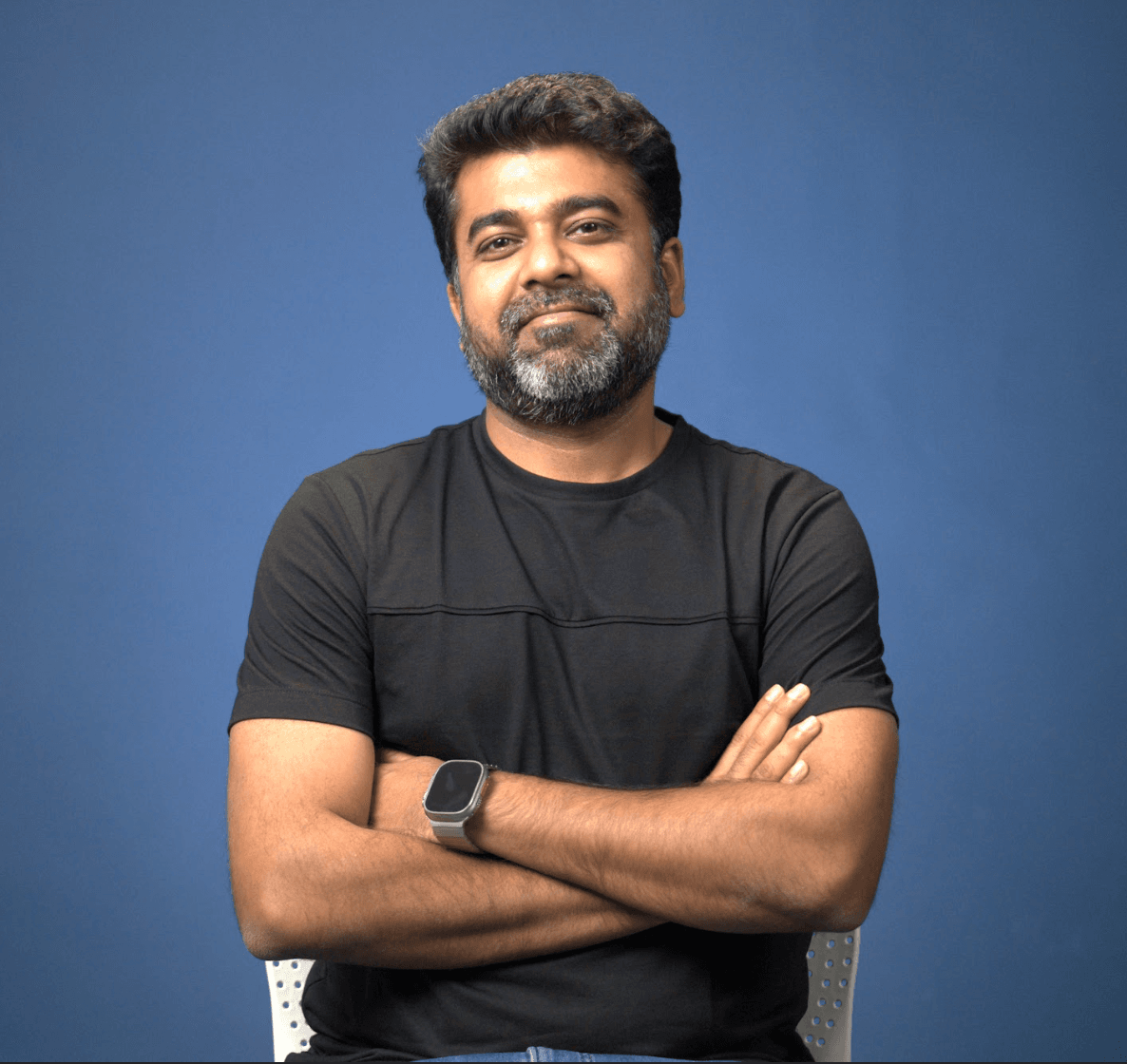
You've worked hard in Dubai for 15 years. You've saved diligently, invested wisely, and now retirement in India looks closer.
You've done the math - your regular expenses are covered. But here's what keeps many NRIs awake at night: What if there's a medical emergency after you return?
A friend's father recently needed bypass surgery in Bangalore. The bill? ₹8.5 lakhs. His health insurance covered ₹5 lakhs.
The rest came from savings meant for something else entirely. This isn't rare. With healthcare inflation in India projected at 13% for 2025, one of the highest in Asia. Medical emergencies can wipe out years of careful financial planning in weeks.
At Belong, we've helped hundreds of NRIs build safety nets for their India returns. We've seen how a dedicated medical emergency fund - separate from your regular emergency fund and retirement corpus - can be the difference between financial stress and peace of mind.
Our WhatsApp community discusses these real experiences every week, and through our app, NRIs access tools to plan these funds systematically.
This guide covers everything: how much you need, where to park it, tax implications, repatriation rules, and the costly mistakes to avoid.
Why You Need a Separate Medical Emergency Fund for Retirement
Your regular emergency fund covers job loss, urgent home repairs, or unexpected travel. Your retirement corpus is meant for monthly expenses. But medical emergencies in retirement operate differently - they're expensive, unpredictable, and they don't wait for market recoveries or tax planning.
Here's what makes medical emergencies unique:
Healthcare inflation outpaces everything else
While general inflation in India hovers around 5-6%, medical inflation has consistently stayed at 13% since 2021. What costs ₹5 lakhs for treatment today will cost ₹8.44 lakhs in just five years. Your retirement corpus calculations likely didn't account for this.
Insurance doesn't cover everything
Health insurance policies come with co-payments (typically 10-20% for senior citizens), room rent limits, disease-specific sub-limits, and waiting periods for pre-existing conditions. A ₹10 lakh claim might result in ₹6-7 lakh actual payout after all deductions. That gap needs funding.
Timing matters when you can't work
Unlike your working years when you had a salary buffer, retirement means you're living off investments. Liquidating equity mutual funds during a market downturn to pay medical bills locks in losses permanently. A dedicated medical fund prevents this.
Senior citizen healthcare costs are unpredictable
Studies estimate that approximately 42% of adults and elderly Indians report at least one chronic condition requiring ongoing care. (source)
. Diabetes management, cardiac follow-ups, or joint replacements can cost ₹2-5 lakhs annually - expenses that continue for decades.
👉 Tip: Don't merge your medical emergency fund with your regular six-month emergency fund. Medical costs require different investment vehicles and withdrawal strategies.
How Healthcare Inflation Affects Your Retirement Math
Let's say you're planning to retire in India in five years. You've calculated you need ₹3 crores based on current costs. But here's the problem: while you've factored in 6% general inflation, your healthcare costs are actually rising at 13% per year.
Here's what this means in real numbers:
Medical Procedure | Cost Today (2025) | Cost in 5 Years (14% inflation) | Cost in 10 Years |
|---|---|---|---|
Bypass Surgery | ₹4 lakhs | ₹7.36 lakhs; lakhs | ₹13.56 lakhs lakhs |
Hip Replacement | ₹4 lakhs | ₹7.36 lakhs | ₹13.56 lakhs |
Cancer Treatment (full course) | ₹10-20 lakhs | ₹18.4-36.8 lakhs | ₹33.9-67.8 lakhs |
ICU Stay (per day) | ₹15,000-₹30,000 | ₹27,600-₹55,200 | ₹50,850-₹101,700 |
Source: Medical Inflation data from Acko, Quality Care Global, MedsurgeIndia, Coverfox and NCBI healthcare cost analysis
What's driving this inflation?
Advanced medical technology. AI diagnostics, robotic surgeries, and precision medicine improve outcomes but cost significantly more. Hospitals investing in these technologies pass costs to patients.
Rising pharmaceutical prices. Patent protections, supply chain issues, and import dependencies mean medicine costs are increasing by single or double digits annually.
Medical tourism demand. India's reputation for quality healthcare attracts global patients, increasing demand and prices for specialized services.
Chronic disease prevalence. Post-COVID, chronic conditions like diabetes, hypertension, and respiratory illnesses have surged. These require long-term care, driving up healthcare spending.
According to NCBI estimates, annual per-person healthcare costs average ₹1,713, but this can increase by 24% when using branded drugs and private hospitals - which most NRIs prefer when they return.
How Much Should You Save for Medical Emergencies in Retirement?
Here's a practical calculation framework we use at Belong when helping NRIs plan their medical emergency fund:
Step 1: Calculate Your Base Medical Emergency Fund
Start with this formula: Base Medical Fund = (₹10-15 lakhs) + (Age-60) × ₹50,000
For example:
- If you're 60: ₹10-15 lakhs base
- If you're 65: ₹12.5-17.5 lakhs
- If you're 70: ₹15-20 lakhs
This covers one major surgery or critical illness episode with associated costs.
Step 2: Add Healthcare Inflation Buffer
If you're planning to retire in 5 years, inflate this amount by 14% annually:
- ₹15 lakhs today = ₹28.9 lakhs in 5 years
- ₹15 lakhs today = ₹55.7 lakhs in 10 years
Step 3: Factor in Your Health Insurance Coverage
Subtract your effective insurance coverage (after co-pays, sub-limits):
- If you have ₹10 lakh insurance with 20% co-pay, effective coverage = ₹8 lakhs
- Your medical emergency fund needs to cover the gap
Step 4: Consider City-Specific Costs
Healthcare costs vary significantly by city:
City | Average Hospital Room (per day) | Major Surgery Cost |
|---|---|---|
Mumbai/Delhi/Bangalore | ₹8,000 - ₹15,000 | ₹6-10 lakhs |
Pune/Hyderabad/Chennai | ₹5,000 - ₹10,000 | ₹4-7 lakhs |
Tier 2 Cities | ₹3,000 - ₹6,000 | ₹3-5 lakhs |
Source: Digit Insurance Healthcare Cost Study
Step 5: Add Chronic Disease Buffer
If you or your spouse have pre-existing conditions:
- Diabetes: Add ₹1-2 lakhs per year
- Cardiac conditions: Add ₹2-3 lakhs per year
- Joint issues: Add ₹1.5 lakhs per year
Example Calculation:
Rajesh, 58, planning to return to Bangalore in 3 years
- Base medical fund needed in 3 years: ₹15 lakhs × (1.14)³ = ₹22.2 lakhs
- Health insurance: ₹10 lakh (effective ₹8 lakh after co-pay)
- Gap to cover: ₹14.2 lakhs
- Chronic condition buffer (diabetes): ₹2 lakhs/year × 5 years = ₹10 lakhs
- Total Medical Emergency Fund Needed: ₹24 lakhs
👉 Tip: Use Belong's Residential Status Calculator to understand when you'll change tax status. This affects how you should structure your medical fund investments.
Health Insurance vs Medical Emergency Fund: Understanding the Difference
Many NRIs make the mistake of thinking "I have health insurance, so I'm covered." But insurance and emergency funds serve different purposes.
What Health Insurance Covers:
- Hospital room charges (up to sub-limits)
- Surgery costs (with possible co-payment)
- Pre and post-hospitalization (typically 60-90 days)
- Ambulance charges
- Diagnostics related to hospitalization
What Health Insurance Often Doesn't Cover:
- Co-payment amounts (10-30% of total bill)
- Room rent above limits (triggers proportionate deductions)
- Non-medical expenses (attendant charges, special diets)
- Experimental or alternative treatments
- Dental and vision care
- Outpatient consultations and regular medicines
- First 2-4 years of pre-existing conditions (waiting period)
What Your Medical Emergency Fund Should Cover:
- Insurance co-payments and gaps
- Pre-existing condition waiting periods
- Premium top-ups as you age
- Second medical opinions abroad
- Home healthcare and physiotherapy
- Ayurvedic or alternative treatments
- Medical emergencies for visiting family members
- Short-notice international medical travel
Real-World Example from Our Community:
Meena, an NRI who returned to Pune, had ₹5 lakh health insurance. Her mother fell and needed hip replacement surgery (total cost: ₹4.5 lakhs). Insurance covered ₹3.2 lakhs after:
- 20% co-pay deduction
- Room rent proportionate deduction (actual room ₹6,000/day, policy covered ₹4,000/day)
- Consumables not covered
She paid ₹1.3 lakhs from her medical emergency fund, plus another ₹80,000 for physiotherapy over six months (not covered by insurance).
👉 Tip: Plan for at least 25-30% of major medical costs to come from your emergency fund, not insurance.
Where to Park Your Medical Emergency Fund: Best Options for NRIs
Your medical emergency fund needs three things: safety, liquidity, and reasonable returns. Here's how to structure it across different instruments:
Tier 1: Instant Access (30% of fund) - For Immediate Emergencies
Liquid Mutual Funds
Liquid funds are debt mutual funds investing in short-term instruments with up to 91-day maturity. Perfect for medical emergencies because:
- Redemption within 24 hours: Funds hit your account the next working day
- Better returns than savings accounts: 7-8% vs 3-4% in savings accounts
- Low risk: NAV remains stable due to short-term holdings
- Repatriable: When invested through NRE accounts, fully repatriable
Top liquid funds for NRIs in 2025:
- Aditya Birla Sun Life Liquid Fund: 7.07% (1-year return)
- HDFC Liquid Fund: 6.95%
- ICICI Prudential Liquid Fund: 6.89%
Source: SBNRI Best Liquid Funds Analysis
How NRIs Can Invest:
- Open NRE or NRO account
- Complete KYC with Indian mutual fund
- Invest lump sum or through SIP
- Link to bank account for instant redemption
Tax implications: Capital gains taxed at your income tax slab rate. TDS of 30% deducted at redemption for NRIs (can claim refund if in lower tax bracket).
High-Yield Savings Accounts (NRE/NRO)
Keep ₹2-5 lakhs in your NRE or NRO savings account for absolute emergencies. While returns are lower (3-4%), you can access funds instantly via debit card or net banking - crucial if you need to pay hospital advance.
Tier 2: Quick Access (50% of fund) - For Major Procedures
Short-Term Fixed Deposits (3-6 months)
Park the bulk of your medical emergency fund in short-term FDs with premature withdrawal facilities.
Why short-term FDs work:
- Higher returns than liquid funds (4.5-6%)
- DICGC insurance up to ₹5 lakhs per bank
- Can break FD with small penalty (0.5-1%)
- Available in NRE/NRO/FCNR formats
Best NRI FD options for medical emergency funds:
Bank | 6-Month NRE FD Rate | Premature Withdrawal Penalty |
|---|---|---|
Not available (min. tenure: 1 year at 6.30-6.60%) | 0.50% | |
4.5-5.5% | 1.00% | |
4-5.5% | 1.00% | |
Not available (min. tenure: 1 year at 6.60-7.10%) | 1.00% |
GIFT City USD Fixed Deposits
If you're worried about rupee depreciation, consider GIFT City USD fixed deposits. These offer:
- Tax-free returns
- USD denomination (no currency risk)
- 4.5-6% returns in USD
- Full repatriation
Perfect for NRIs in UAE who might need to send money back for medical emergencies. Track exchange rates with our Rupee vs Dollar Tracker.
Tier 3: Medium-Term Reserve (20% of fund) - For Extended Care
Ultra Short-Term Debt Funds
For extended medical care or chronic condition management, park 20% in ultra short-term debt funds. These invest in securities with 3-12 month maturity and offer:
- 6-6.5% returns
- Moderate liquidity (1-2 days)
- Lower volatility than longer-term debt funds
- Good for 6-12 month treatment costs
Senior Citizen Savings Scheme (SCSS)
If you're above 60, SCSS offers:
- 8.2% interest (highest among government schemes)
- ₹30 lakh maximum deposit
- Quarterly interest payouts
- Premature withdrawal after 1 year (with penalty)
Downside: Not available for NRIs, only resident Indians. Convert status if planning permanent return.
👉 Tip: Don't put your entire medical emergency fund in one bank or one instrument. Spread across 3-4 options for safety and access flexibility.
Tax Implications of Medical Emergency Funds for NRIs
How you structure your medical fund affects taxes significantly. Here's what you need to know:
Investment Phase Taxation
FD Interest:
- 30% TDS on all FD interest for NRIs (no slab benefit)
- Can claim DTAA benefit if applicable
- NRE FD interest is tax-free in India
- NRO/FCNR FD interest is taxable
Liquid Fund/Debt Fund Gains:
- All gains taxed as short-term at slab rates (post-April 2023)
- 30% TDS at redemption
- Can claim refund if actual tax liability is lower
- No indexation benefit anymore
Savings Account Interest:
- Taxable at slab rates
- No TDS if interest \< ₹10,000 for NRE
- TDS applicable for NRO accounts
Withdrawal Phase Taxation
Medical Expenses: Medical expenses are not tax-deductible when you withdraw from emergency fund. However:
- Section 80D deduction available for health insurance premiums (up to ₹50,000 for senior citizens)
- Preventive health check-up: ₹5,000 deduction
- Save all medical bills for tax filing
DTAA Benefits:
If you're a tax resident of UAE, you can claim DTAA benefits to reduce TDS:
- Obtain Tax Residency Certificate
- File Form 10F with Indian bank
- Get TDS reduced from 30% to applicable treaty rate
Repatriation Considerations
NRE Account Investments:
- Fully repatriable (principal + interest)
- No limit on repatriation
- Convert INR to foreign currency at market rate
NRO Account Investments:
- Repatriable up to USD 1 million per year
- Requires Form 15CA/15CB
- Must pay taxes before repatriation
GIFT City Investments:
- Fully repatriable
- Already in USD
- No conversion required
👉 Tip: If you're planning to return to India permanently, time your residential status change to minimize taxes on your medical emergency fund withdrawals.
Currency Considerations: INR vs USD for Medical Emergency Funds
Many NRIs in UAE face this dilemma: Should I keep my medical emergency fund in rupees or dollars?
The Case for INR (Rupee-Denominated Funds):
Medical bills are in rupees: You'll pay hospitals in INR, so no conversion cost
Higher interest rates: INR FDs offer 7-8% vs 4-5% for USD FDs
No conversion delays: Instant access to funds in emergencies
Currency depreciation risk: INR has depreciated 3-4% annually vs USD
If you return to UAE: You might need to convert back to AED
The Case for USD (Dollar-Denominated Funds):
Currency protection: Your UAE income is in AED/USD, so no exchange risk
GIFT City advantages: Tax-free returns, full repatriation
Flexibility: Can use for medical tourism or treatment abroad
Conversion costs: 2-3% forex charges when converting to INR for Indian hospitals
Lower returns: USD FDs offer 5.0-5.5% vs 7-8% for INR
Belong's Recommended Approach:
Split your medical emergency fund 60-40:
- 60% in INR: For immediate India healthcare needs
- 40% in USD (GIFT City): As hedge and for flexibility
This gives you:
- Immediate INR access for emergencies
- Currency protection via USD holdings
- Tax-free returns from GIFT City component
- Flexibility for medical tourism
Track the INR-USD exchange rate using our Rupee vs Dollar Tracker to decide conversion timing.
Common Mistakes NRIs Make With Medical Emergency Funds
After helping hundreds of NRIs plan their retirement return, we've seen these mistakes repeatedly:
Mistake 1: Lumping Medical Fund with Regular Emergency Fund
Regular emergencies (job loss, home repair) and medical emergencies have different timelines and amounts. Medical costs can hit ₹10-15 lakhs in weeks. Keep them separate.
Mistake 2: Over-Relying on Health Insurance
Insurance is critical but it's not enough. As we discussed, co-payments, sub-limits, and waiting periods create gaps. Budget for 25-30% of major medical costs to come from savings.
Mistake 3: Investing Medical Fund in Equity
Equity mutual funds are great for wealth creation, but terrible for emergency funds. What if you need surgery when markets are down 20%? Stick to debt instruments for medical funds.
Mistake 4: Not Adjusting for Healthcare Inflation
Calculating today's medical costs and assuming they'll stay the same is dangerous. Inflate by 14% per year in your planning.
Mistake 5: Forgetting About Parents
Many NRIs support parents financially. If your parents are in India, their medical emergency fund needs to be part of your planning. Senior citizens face:
- Higher premiums
- More co-payments
- More pre-existing conditions
Budget an additional ₹5-10 lakhs for parents' medical emergencies.
Mistake 6: Ignoring Tax-Free Options
GIFT City investments offer tax-free returns. A ₹10 lakh GIFT City USD FD at 5% gives you the equivalent of 7.14% taxable return (if you're in 30% tax bracket).
Mistake 7: Not Having Instant Access Funds
Keep at least ₹2-3 lakhs in savings account or instant-redemption liquid funds. Hospitals often demand advances before starting treatment.
Mistake 8: Planning for One Person Only
If you're married, both of you will face medical costs. Double your fund size or plan for ₹20-25 lakhs minimum for a couple.
Step-by-Step Guide to Building Your Medical Emergency Fund
Here's a practical action plan you can start implementing today:
Month 1-2: Assessment & Planning
- Calculate your target medical emergency fund using the formula above
- Check your current health insurance coverage and identify gaps
- Use Belong's Compliance Compass to ensure you're meeting all NRI financial rules
- Assess your residential status for tax planning
Month 3-4: Account Setup
- Open/activate NRE account for repatriable investments
- Complete KYC for mutual fund investments
- Link accounts to Belong app for tracking FD rates
- Join our WhatsApp community to learn from others' experiences
Month 5-12: Build Foundation (First ₹5-10 Lakhs)
- Park in liquid funds: Open liquid fund account and invest ₹2-3 lakhs
- Open short-term FDs: Invest ₹3-5 lakhs in 6-month NRE FDs
- Maintain savings buffer: Keep ₹2 lakhs in savings account
- Set up auto-transfer: If earning in UAE, set up monthly transfer to build fund
Year 2: Scale & Diversify (Reach ₹15-20 Lakhs)
- Add GIFT City component: Consider USD FDs at GIFT City for tax-free returns
- Upgrade insurance: Increase health insurance cover to ₹15-20 lakhs
- Review and rebalance: Check if allocation across instruments is optimal
- Compare rates regularly: Use Belong's FD Rate Tool quarterly to find best rates
Year 3+: Maintain & Update
- Inflation adjustment: Increase fund by 14% each year
- Reinvest maturity proceeds: When FDs mature, reinvest in highest-rate options
- Update for health changes: Add to fund if new conditions develop
- Pre-retirement boost: In final 2-3 years before India return, accelerate contributions
Emergency Activation Protocol:
When medical emergency hits:
- Assess urgency: Life-threatening? Use savings account instantly
- Get cost estimate: Ask hospital for total estimated cost
- Contact insurance: File cashless claim or plan reimbursement
- Activate funds: Redeem liquid funds (24 hours) or break FD if needed
- Document everything: Keep all bills for insurance claims and tax filing
- Replenish after: Once emergency passes, rebuild the fund
Building Your Medical Safety Net, Starting Today
Healthcare costs in India aren't going down. With 14% annual inflation, waiting to build your medical emergency fund means it'll cost you significantly more every year you delay.
Here's your action plan for this week:
Today: Calculate how much you need using the formula we shared above
This Week:
- Compare NRI FD rates on Belong's comparison tool
- Check your current health insurance coverage gaps
- Open a liquid fund account if you don't have one
This Month:
- Transfer the first ₹2-3 lakhs to start your medical emergency fund
- Explore GIFT City USD FDs for the tax-free component
- Download the Belong app to track your investments and get rate alerts
Remember: your medical emergency fund isn't an expense - it's peace of mind. It's the difference between facing a health crisis with financial stress versus handling it with confidence. It's the freedom to choose the best treatment without worrying about liquidating long-term investments at the wrong time.
In our WhatsApp community, NRIs regularly share their experiences navigating healthcare costs, insurance claims, and investment strategies.
Join us - learn from those who've been through medical emergencies, ask questions, and get personalized guidance.
Your retirement in India should be about enjoying life, spending time with family, and pursuing your passions - not worrying about medical bills. Start building your medical emergency fund today.
Also Read - How to Repatriate Funds from NRO/NRE Accounts
Sources & References
- Rising Medical Inflation Rate in India - CoverYou
- Medical Inflation In India 2025 - Acko
- Healthcare Costs in India - Digit
- Retirement Planning for NRIs - SBNRI
- Liquid Funds for NRIs - iNRI
- Medical Inflation Impact - Onsurity
- Healthcare Expenses Rising - Smile Foundation
- Best Liquid Funds 2025 - SBNRI:




